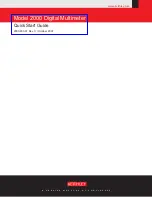
5
X
RS-232,485 + 2
X
E
THERNET
/2 M
BIT
/
S
G.703 (G.704) M
ULTIPLEXER
O
PERATING
M
ANUAL
IOA81-1E
8
August 2004
The TM-81.1 device is equipped with two Ethernet 10BASE-T MDI-X tributary ports
outputted to RJ-45 connectors.
The cables connecting the TM-81.1 multiplexer with other devices are shown on Fig. 9
and 10. When connecting with the MDI-X port of other device (like hub or switch) the pairs
of transmitter and receiver should be crossed (Fig, No. 9). For connecting with the MDI port
(network card, router) pairs of transmitter and receiver should be connected directly (Fig. No.
10).
Connection should be made by twisted cable, category 5 at least, with the characteristic
impedance of 100
Ω
.
The RS-232/485 Interface
The device is equipped with five asynchronous DCE ports outputted to DB-9 connectors
located at rear panel. Each port may be configured for connection with the RS-232 or RS-485
interface. Type of connected interface is selectable by using switches that are individually
dedicated to each port and located on the front panel.
Scheme of connecting the RS-232 interface cable depends on pin arrangement and type
of mating connector. Correct operation is ensured on condition that suitable circuits are con-
nected and the transmitter
→
receiver principle is observed during connecting the port with
another interface.
When configuring the interface to RS-485, a number of operations, resulting from the in-
terface properties, should be performed in order to ensure proper operation of the interface.
When switching to another type of interface, the type of transmitters and receivers change
from unbalanced RS-232 to balanced RS-485 ones. Therefore the RS-485 interface should be
connected by using twisted cable with the characteristic impedance of pairs equal to 120
Ω
.
Also, the principle of conn/- circuits with the same symbol (e.g. TD+/-) over one pair
should be observed.
As a standard, a RS-485 line uses a shielded balanced twisted cable for transmitting the
signals. Up to 32 receivers/transmitters can be connected to balanced twisted bus. There are
no special recommendations concerning the point where the device is connected to the bus
and connecting the device at the end is not necessary, however the resistors with impedance
equal to characteristic impedance of cable should be connected to at both ends of the bus.
Due to specific nature of RS-485 topology, transmitters are required to set into high im-
pedance state after completion of transmission or during no-transmission period. This state is
seen by receiver as silence on the line. Most line receivers set into logical 1 when their inputs
are open. In case of no transmission all transmitters are set to high impedance and their inputs
are short-circuited by 120
Ω
resistors. From the receiver point of view such state is undefined
and, despite the use of hysteresis in receivers, occurrence of interferences on the line may
cause switching of the receiver. In order to prevent this phenomenon, the line during no-
transmission is enforcedly set to appropriate state by adequate biasing of receiver’s inputs.
Each port of the TM-81.1 multiplexer is equipped with a set of resistors allowing terminat-
ing the bus. These resistors are connectable by using a set of jumpers described in point 4.5.
Summary of Contents for TM-81.1
Page 2: ......















































